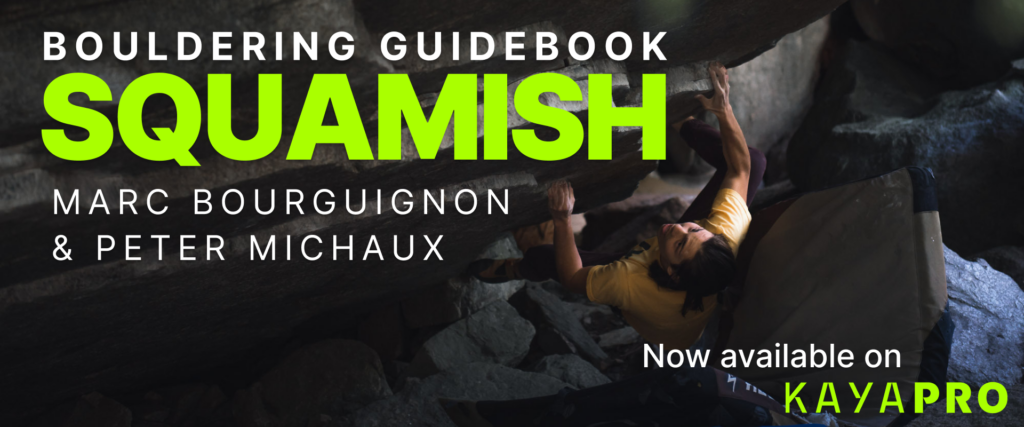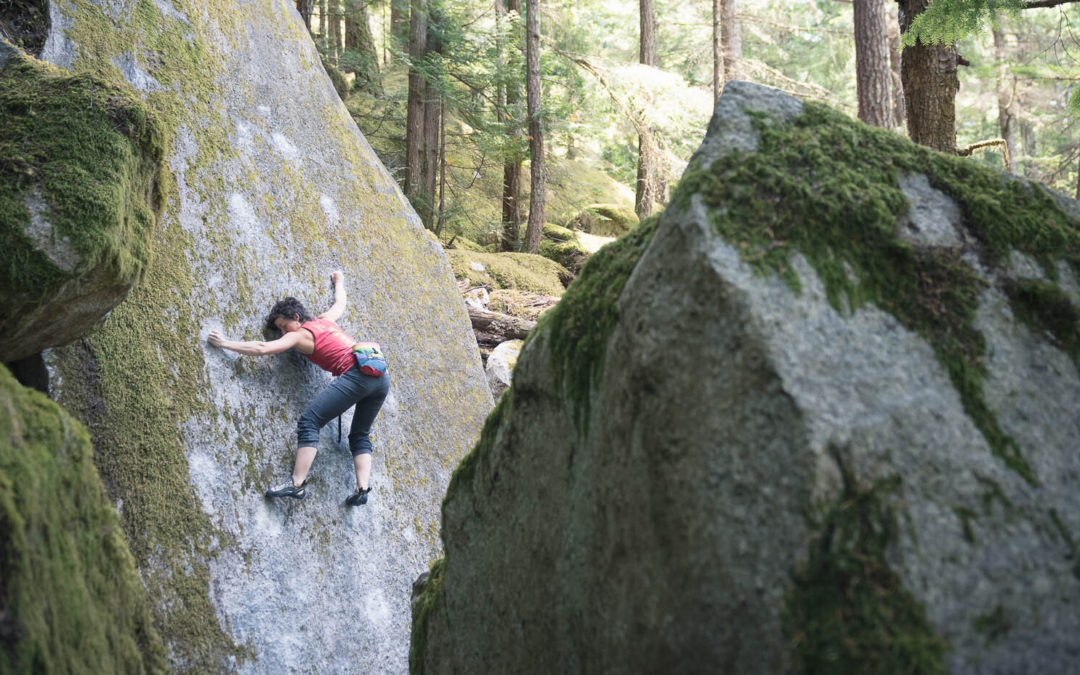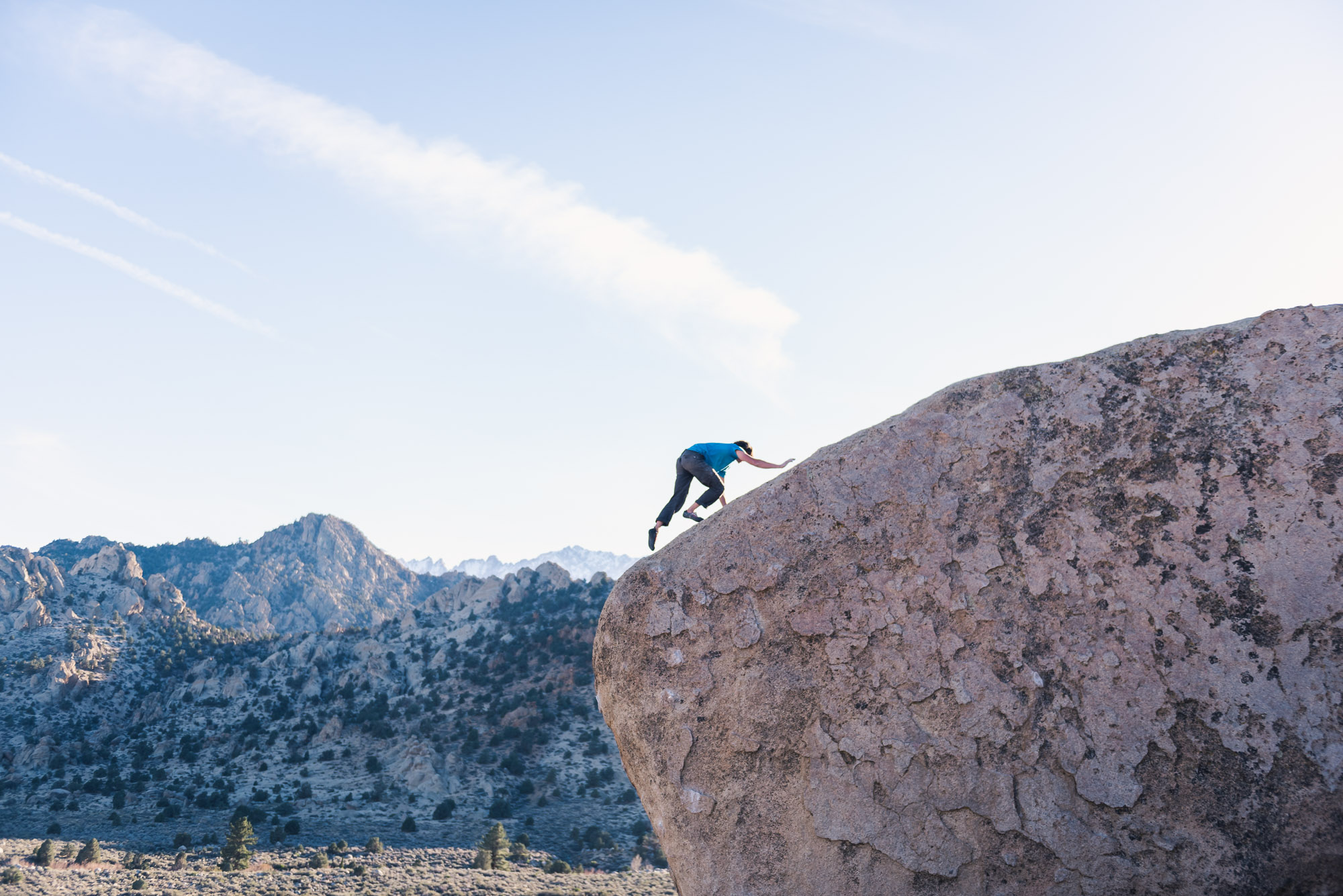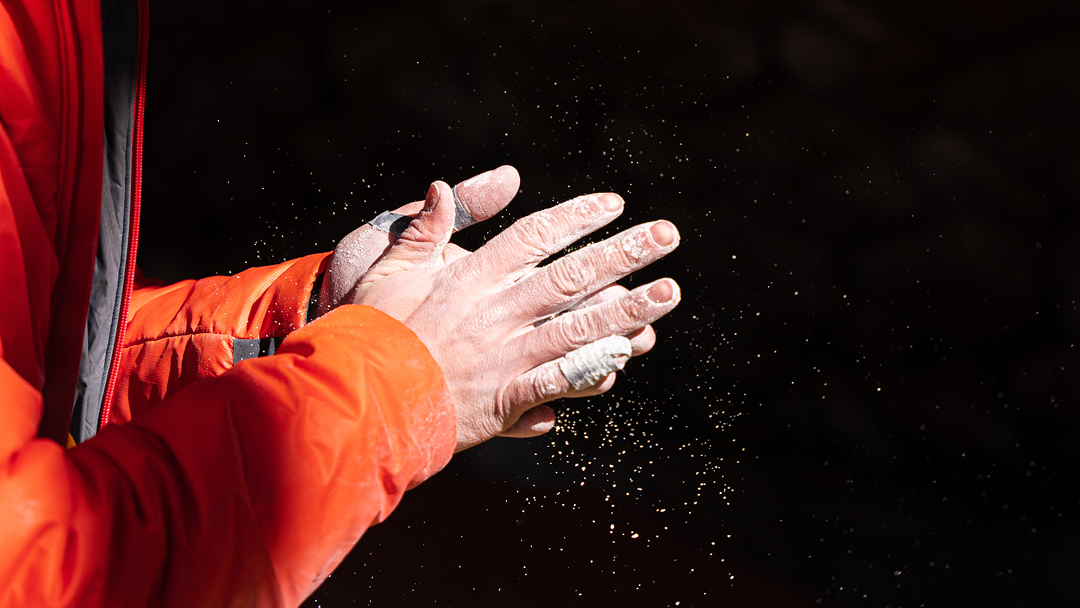Squamish Bouldering Overview
Tucked between the ocean and alpine peaks along the Sea-to-Sky Highway, Squamish, British Columbia is one of the most iconic bouldering destinations in North America. With thousands of problems scattered throughout lush forests and granite corridors beneath the towering Stawamus Chief, Squamish offers a unique blend of scenic beauty, technical variety, and deep climbing history.
Whether you’re a first-timer drawn by the area’s reputation or a returning climber looking to push into higher grades or lesser-known gems, this guide will help you plan your trip with ease. From parking and camping beta to weather tips, and local ethics, here’s everything you need to know before hitting the granite.
Also, check out The Top 10 Most Popular Problems in Squamish! Or, watch the full video on YouTube.
Understanding Squamish Bouldering
Rock Type and Climbing Style
Squamish bouldering is defined by its world-class granite, coarse-grained, grippy, and textured. The massive granite boulders tumbled from the towering walls of The Chief, creating an expansive playground of technical, varied problems. The climbing style here emphasizes body awareness, problem-solving, and adaptability, offering something for everyone across all grades.
Expect a wide variety of movement: from burly compression blocs and sloper-heavy mantles to delicate aretes, micro-crimps, and heel-hook-intensive roof climbs. Many problems combine powerful movement with subtle technique, rewarding climbers who can maintain body tension and use the natural features of the stone.
Compared to other Pacific Northwest crags, Squamish granite offers more diversity. It’s not uncommon to find highballs, slabs, and overhangs all within the same zone. And thanks to the dense forest cover, many boulders stay climbable even on warmer days.
Best Times to Boulder in Squamish
The prime bouldering season in Squamish spans from early April to October, with conditions varying according to temperature, rainfall, and forest cover. The granite here is friction-dependent, so cooler temperatures and lower humidity offer the best grip, especially for slopey problems.
- Spring (April–June): This is when Squamish really comes alive. Snow has melted, the forest is lush, and most boulders are dry. Expect some rain and variable conditions, but on clear days, temps are often perfect for climbing.
- Summer (July–September): Though it’s the driest time of year, Squamish summers can be warm. Luckily, the dense tree canopy keeps many areas shaded and cooler, making it surprisingly climbable even in the heat. Early mornings and evenings are ideal for sending.
- Fall (October): Often considered the best month for hard sends. Crisp air, stable weather, and dry conditions make for perfect bouldering temps. The changing foliage also makes for stunning scenery.
- Winter (November–March): While many climbers put away their pads for the winter season, dedicated locals can still find windows of good conditions on dry, cold days.
No matter the season, always check the weather and bring a tarp; Pacific Northwest conditions can shift fast. Also, remember to pack the bug spray if you’re out in spring or early summer!
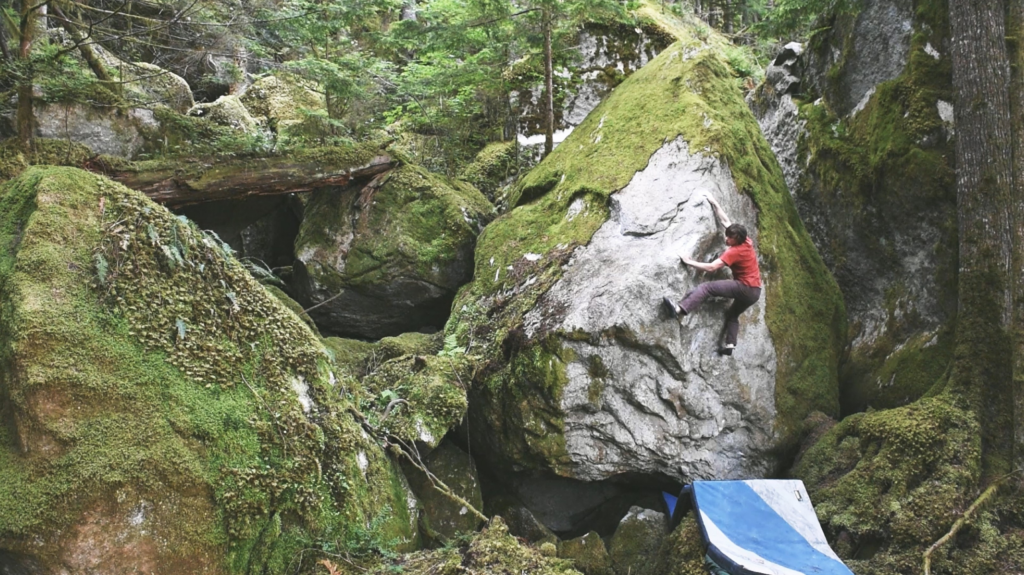
Essential Areas for Every Skill Level
Beginner-friendly Classics
Squamish is not just for the elite, it offers a wide range of beginner-friendly classics that serve as perfect introductions to granite climbing. These problems combine aesthetic lines, approachable difficulty, and solid landings, making them ideal for building confidence and refining technique.
Summer Vacation V0– Also called “High” V0, this one is airy but mellow, and a good introduction to taller blocs.
Nefarious V1– Start matched on a jug above head height. Climb jugs straight up to a tall topout.
Heartbreak Hotel V2– Start matched on the positive shelf and traverse right to a difficult lip encounter.
Titanic V3– Stand start with opposing sidepull crimps at head height. Top out at the tip of the prow.
Intermediate Classics
Once you’ve ticked the easier classics and gotten a feel for the granite style, Squamish opens up into a world of iconic intermediate boulders that blend power, technique, and problem-solving. Many of these are the climbs that keep locals coming back and turn visitors into lifelong fans.
Superfly V4– The most popular Squamish boulder on KAYA! Sit start matched on a protruding sidepull undercling just right of the left arete. Pull through steep moves on the overhanging face to top out straight above avoiding the left arete.
Easy in an Easy Chair V4– Start matched on the sloping shelf on the far left side and traverse right on slippery slopers to gain the lip.
Space Monkey V5– Start compressing as low as possible in the overhang. Slap your way to a slot jug and climb the arete to topout.
Majestic V6– A unique adventure perfect for a hot summer day. Start matched in the hueco, traverse the seam right to a big move to the arete. Topout above with a tenuous move to the lip. Watch for the tide. When it’s high tide it may not be climbable as the water reaches the start holds. Low tide can also make it difficult to start and may require a sideways dyno from shore. It’s best hit inbetween for the most accessible experience. Check Squamish tides online.
The Fuzz V7– Start matched crimping the seam. Pull left to topout on the face.
Hard Classics
The hard classics in Squamish have earned their reputations through proud lines, unique movement, and pretty sequences. Whether it’s delicate footwork on razor crimps or full-body tension through steep compression, these boulders demand commitment, but reward you with pure, beautiful climbing.
Mantra V8– Overhung compression at its finest! Start matched on the jug and compress up the arete.
Tatonka V9– A fun and flowy cave climb! Start matched on the jug and compress up the arete.
The Reckoning Stand V10– The stand start to the ultra-hard testpiece. Start with a left pinch at chest height and right sidepull crimp. Pull on with difficulty and compress up the left arete to an exciting throw to the juggy lip. The original topout went straight up without trending right.
Worm World Cave Low V10– One of the best of the grade in Squamish, with lots of betas. Sit start with a left pinch and right arete to climb through the punchy roof into WWC.
Extra-hard Classics
The extra-hard classics are testpieces that have defined eras and inspired generations of climbers. From futuristic compression battles to unforgiving crimp lines, these problems represent the sharpest end of Squamish climbing. If this is your grade range, don’t miss these problems.
Room Service V12– An iconic first of the grade for many climbers. Start with left hand pinching the arete above head height and right hand high on the diagonal shelf feature.
Shelter V13– Just how hard could three moves be? Find out and start with a left incut crimp and right gaston pinch. Pull 3 moves to a blank topout.
The Reckoning V14– A legendary Squamish line. Sit start compressing with a left incut sidepull and right sloping sidepull.
Planning Your First Squamish Bouldering Visit
With a combination of easy access, stunning scenery, and problems that reward both precision and power, it’s no surprise climbers travel from around the globe to sample Squamish blocs. Here’s everything you need to know to plan your first trip.
Getting There
Squamish is located along British Columbia’s Sea to Sky Highway (Highway 99), about an hour north of Vancouver and 45 minutes south of Whistler. As you enter town, you’ll see the massive granite face of the Stawamus Chief looming overhead, a clear sign you’re in climbing country.
The majority of Squamish’s bouldering is centered around the base of the Chief, with trail access from the popular Smoke Bluffs parking area, Grand Wall lot, or Apron parking. Be sure to park in designated lots and avoid blocking residential roads or driveways.
Safety and Ethics Essentials
Squamish has an active and passionate climbing community, and preserving access means climbing with care. Here are a few ways to minimize your impact and climb respectfully:
- Brush Your Chalk: Use a soft brush to remove tick marks and excess chalk after every session—especially on classic lines.
- Stay on Trails: Squamish trails wind through mossy, sensitive ecosystems. Stick to marked paths and never trample vegetation to shortcut.
- Pack it Out: Everything you bring in, trash, tape, banana peels, must go out with you.
- Noise Levels: Many boulders are close to neighborhoods or popular hiking trails. Keep music low and be courteous of your group’s volume.
- Respect Closures: Some boulders or areas may close seasonally for nesting birds or wildlife protection. Check local signage or the info section of the guide on KAYA.
- Dogs: Keep dogs under control and off crash pads, and as always, clean up after them.
By showing respect to the land and other climbers, you’re contributing to the ongoing effort to keep Squamish accessible and enjoyable for the climbing community.
Squamish Bouldering Conclusion
Squamish is a legendary granite playground offering world-class bouldering in an unforgettable setting. What makes Squamish special isn’t just the quality of the problems; it’s the community, the respect for the land, and the shared sense of stewardship among climbers.
By brushing your holds, packing out your trash, staying on trails, and keeping noise to a minimum, you’re helping protect access to one of North America’s most treasured climbing areas. Squamish has something for everyone, but only if we all do our part to keep it that way.
Check out Marc Bourguignon and Peter Michaux’s complete guide on KAYA for access info, detailed problem descriptions, and GPS maps!
